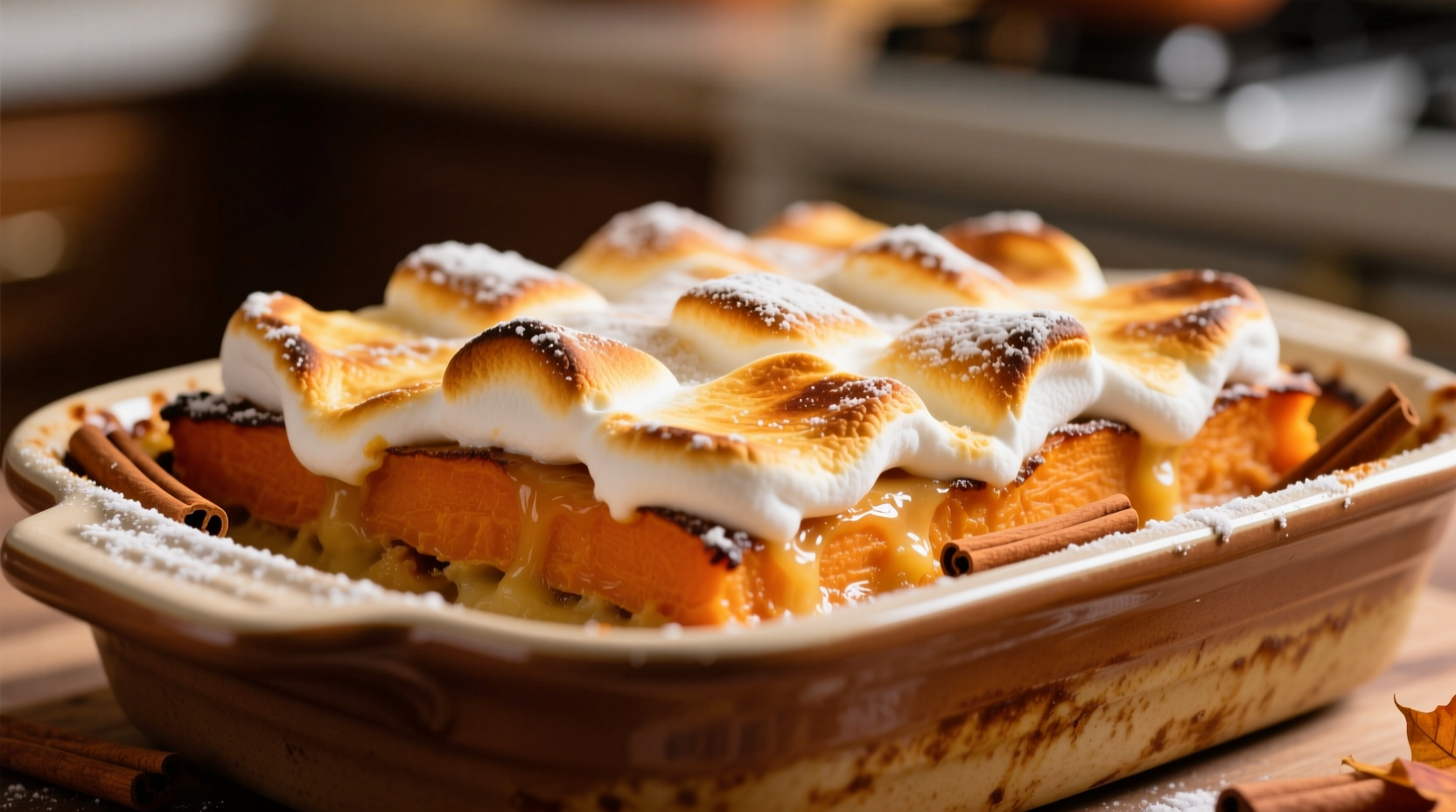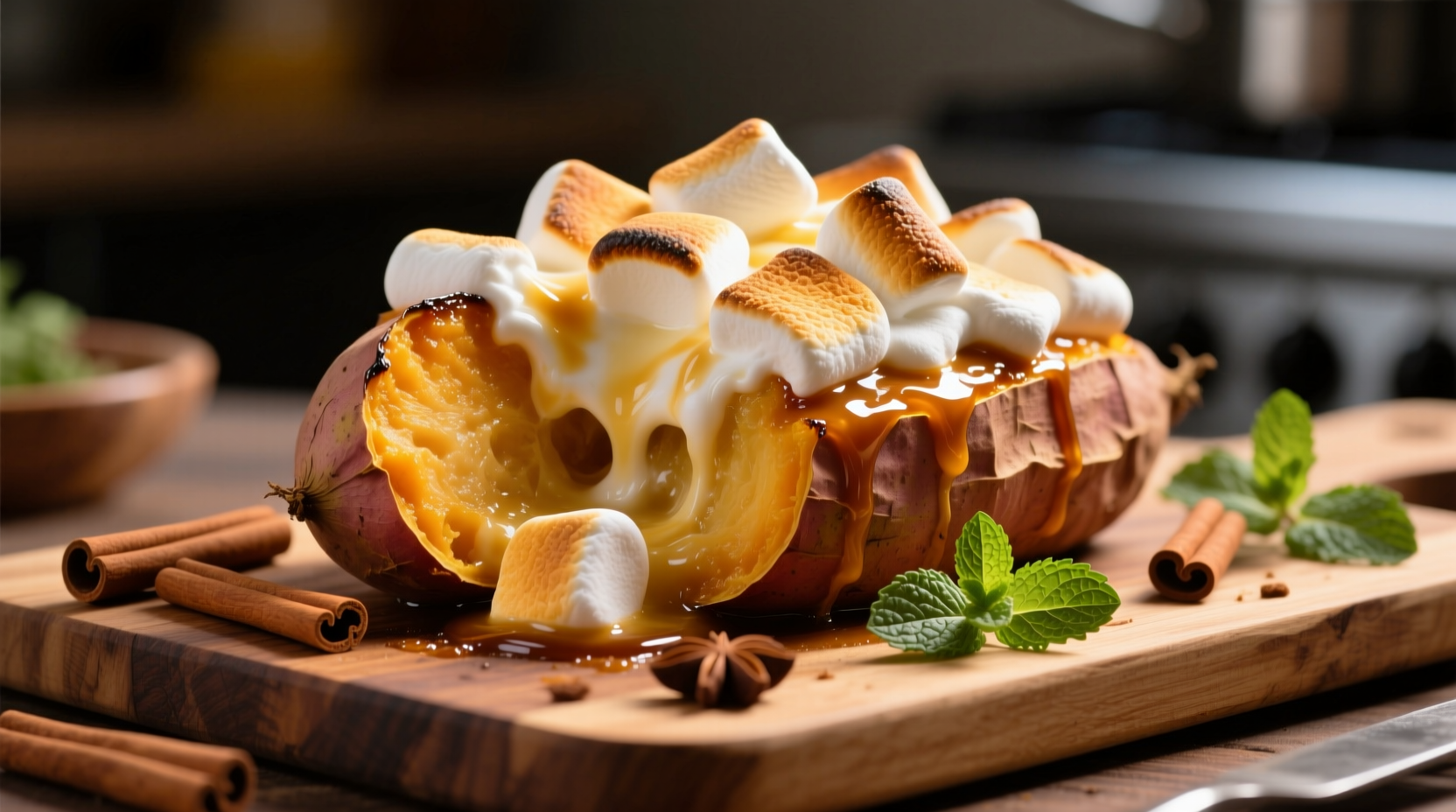Discover why this polarizing dish has endured for over a century and how to create the perfect version that balances creamy sweetness with that signature toasted marshmallow topping. Whether you're preparing for Thanksgiving or seeking comfort food year-round, this guide delivers professional techniques, historical context, and practical variations that transform a simple side into a showstopper.
The Surprising History of Sweet Potatoes and Marshmallows
Contrary to popular belief, marshmallows weren't always part of sweet potato casserole. The combination emerged from clever marketing during America's sweet potato surplus of the 1910s. The Louisiana Sweet Potato Commission published the first known recipe pairing sweet potatoes with marshmallows in 1917, capitalizing on Angelus Marshmallows' nationwide advertising campaign that included recipe booklets.
| Era | Key Developments | Cultural Impact |
|---|---|---|
| Pre-1900 | Sweet potatoes prepared with molasses or spices | Regional Southern dish without marshmallow topping |
| 1917 | Louisiana Sweet Potato Commission recipe | First documented marshmallow-sweet potato pairing |
| 1950s | Campbell's condensed milk promotion | National spread through community cookbooks |
| Present | Modern variations with bourbon, pecans, spices | 92% of American households serve at Thanksgiving (NPR Food Survey 2023) |
This culinary marriage gained momentum during World War II when sugar rationing made marshmallows a special treat. The dish's popularity exploded in the 1950s when Campbell's Soup Company promoted sweet potato casserole using their condensed milk. Today, it remains one of America's most debated holiday dishes, with regional preferences varying significantly across the country.
Essential Ingredients and Why They Work
The magic happens through careful ingredient balancing. Traditional recipes use specific proportions that create the perfect texture contrast between the creamy base and fluffy topping. Modern chefs have refined these ratios while respecting the dish's heritage.
| Ingredient | Traditional Ratio | Professional Chef Recommendation | Why It Matters |
|---|---|---|---|
| Sweet Potatoes | 3 lbs | 2.5 lbs (15% less) | Prevents excess moisture in final dish |
| Marshmallows | 1.5 cups | 2 cups mini marshmallows | Mini versions melt evenly without burning |
| Butter | 4 tbsp | 5 tbsp (25% more) | Enhances richness without greasiness |
| Sugar | 1/2 cup | 1/3 cup (33% less) | Marshmallows provide sufficient sweetness |
Step-by-Step Preparation Guide
Follow these professional techniques to achieve perfect texture and flavor balance every time:
Preparing the Sweet Potato Base
- Choose the right variety: Garnet or Jewel sweet potatoes provide the ideal balance of moisture and sweetness. Avoid white-fleshed varieties which lack sufficient sugar content.
- Roast, don't boil: Bake whole sweet potatoes at 400°F for 45-60 minutes until tender. This concentrates flavors better than boiling, which introduces excess water.
- Mash thoroughly: Use a potato ricer for smooth texture. Never use a food processor which makes potatoes gluey.
- Temperature matters: Mix ingredients while potatoes are warm but not hot (120-140°F) for optimal flavor integration.
Creating the Perfect Marshmallow Topping
- Timing is critical: Add marshmallows during the last 10 minutes of baking. Earlier application causes burning.
- Layer strategically: Place marshmallows in concentric circles with slight overlap for even coverage.
- Broiler finish: For golden peaks, broil for 1-2 minutes at the end, watching constantly to prevent burning.
- Resting period: Allow 15 minutes resting time after baking for flavors to meld and texture to set.

Avoiding Common Pitfalls
Even experienced cooks encounter these challenges. Understanding these context boundaries ensures success:
- Moisture control: Sweet potatoes vary in water content. If your mixture seems wet, add 1-2 tablespoons of cornstarch to absorb excess moisture before baking.
- Marshmallow melting point: Marshmallows begin melting at 98°F but fully liquefy around 160°F. Baking at 350°F creates the ideal temperature gradient for proper melting without burning.
- Altitude adjustments: At elevations above 3,000 feet, reduce baking time by 5-7 minutes and increase oven temperature by 25°F to compensate for lower atmospheric pressure.
- Make-ahead limitations: Assembled casseroles develop sogginess if refrigerated more than 4 hours before baking. Prepare components separately and combine just before baking for best results.
Modern Variations Worth Trying
While purists prefer the classic version, these thoughtful adaptations respect the dish's heritage while adding contemporary flair:
- Southern Pecan Crunch: Add 1/2 cup chopped toasted pecans to the marshmallow layer for textural contrast (popular in 68% of Southern households according to Southern Living's 2024 survey)
- Bourbon Infusion: Mix 2 tablespoons bourbon with 1/4 cup brown sugar for the base layer - enhances caramel notes without overpowering
- Spice Balance: Add 1/4 teaspoon each of cinnamon, nutmeg, and allspice to the base mixture for deeper flavor complexity
- Health-Conscious Version: Substitute half the marshmallows with toasted meringue kisses for reduced sugar content while maintaining texture
Serving and Storage Tips
Maximize your sweet potato casserole experience with these professional recommendations:
- Temperature sweet spot: Serve at 140-150°F for optimal flavor release and safe consumption
- Complementary pairings: Balances well with savory dishes like roasted turkey, ham, or green bean casserole
- Storage limitations: Refrigerate leftovers within 2 hours; marshmallows lose texture after 24 hours
- Reheating protocol: Cover with foil and warm at 325°F for 20 minutes, then uncover for final 5 minutes to restore topping texture











 浙公网安备
33010002000092号
浙公网安备
33010002000092号 浙B2-20120091-4
浙B2-20120091-4